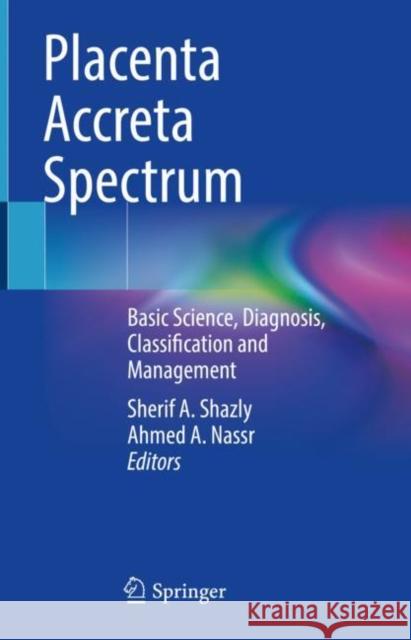Placenta Accreta Spectrum: Basic Science, Diagnosis, Classification and Management » książka
Placenta Accreta Spectrum: Basic Science, Diagnosis, Classification and Management
ISBN-13: 9783031103469 / Angielski / Twarda / 2022 / 200 str.
Placenta Accreta Spectrum: Basic Science, Diagnosis, Classification and Management
ISBN-13: 9783031103469 / Angielski / Twarda / 2022 / 200 str.
(netto: 575,06 VAT: 5%)
Najniższa cena z 30 dni: 578,30
ok. 22 dni roboczych
Bez gwarancji dostawy przed świętami
Darmowa dostawa!
Placenta accreta spectrum (PAS), an obstetric emergency associated with significant maternal morbidity and mortality, has increasingly become a global challenge with the rising trend of cesarean deliveries. This book provides a comprehensive review of basic science-related to PAS, discusses modern practice in diagnosis and classification of PAS disorders, and appraise current recommendations on PAS management in view of recent studies, guidelines, and expert opinions.In the last few years, there have been many new updates to practice guidelines including ACOG, RCOG, and FIGO guidelines in addition to several new studies, some of which were unusually multicenter and of large sample size, that are eligible to make major changes in our PAS practice. In addition, the book aims at providing more comprehensive review of all aspects related to PAS from experts, including topics that are deficient in similar books e.g., vascular anatomy, risk reduction, adjuvant treatments.The book provides a single source that provides academic knowledge for researchers and investigators, and clinical guidance to best practice and recent updates in management of women with PAS.
Placenta accreta spectrum (PAS), an obstetric emergency associated with significant maternal morbidity and mortality, has increasingly become a global challenge with the rising trend of cesarean deliveries. This book provides a comprehensive review of basic science-related to PAS, discusses modern practice in diagnosis and classification of PAS disorders, and appraise current recommendations on PAS management in view of recent studies, guidelines, and expert opinions.In the last few years, there have been many new updates to practice guidelines including ACOG, RCOG, and FIGO guidelines in addition to several new studies, some of which were unusually multicenter and of large sample size, that are eligible to make major changes in our PAS practice. In addition, the book aims at providing more comprehensive review of all aspects related to PAS from experts, including topics that are deficient in similar books e.g., vascular anatomy, risk reduction, adjuvant treatments.The book provides a single source that provides academic knowledge for researchers and investigators, and clinical guidance to best practice and recent updates in management of women with PAS.











